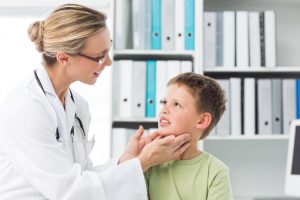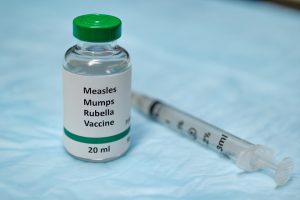mumps disease; Symptoms, treatment methods + video
Mumps is a contagious viral disease whose main symptoms are inflammation of the salivary glands and often occurs in children. The most apparent sign of mumps is inflammation of the salivary glands, which causes swelling of the throat and face. But it can also spread to other glands, such as the pancreas, brain, testicles, and ovaries. About 20% of people with the mumps virus have no symptoms. There is no antiviral treatment for this disease, and only its symptoms can be treated. In the following, we will introduce you to the symptoms, causes, methods of diagnosis, and treatment of mumps.
What is mumps?
It is a contagious disease caused by a virus transmitted from person to person through saliva, nasal secretions, and close contact. The Fdisease primarily affects the glands responsible for saliva production. The MMR vaccine (measles, mumps, and rubella) is given at an early age to protect against the virus, which can be very useful.
Symptoms of mumps:
Symptoms usually appear 2 to 3 weeks after infection, but about 20% of people with the virus do not experience any symptoms. The symptoms of this disease are initially similar to the flu, which we will mention below:
- body pain
- Headache
- Loss of appetite or nausea
- Fatigue
- Mild fever
But the main symptoms that are completely specific to this disease include pain and inflammation of the parotid glands (one of the three sets of salivary glands). This condition can cause symptoms such as bulging and enlarged cheeks.
Other symptoms associated with mumps can include:
- Pain on the sides of the face and inflamed areas
- Pain and difficulty when swallowing
- Fever
- Dry mouth
- Pain in the joints
Adults rarely get the disease. But in this case, the symptoms are generally the same in children and adults, although sometimes the condition gets a little worse and the side effects get a little more severe.

Causes of mumps:
The disease is caused by an infection caused by the mumps virus. The disease is transmitted through the respiratory secretions of a person who has already had the disease. During mumps transmission, the virus travels from the airways to the salivary glands and reproduces, which can cause the glands to swell.
The following are examples of mumps emissions:
- Sneezing or coughing
- Use plates, spoons, and personal belongings of an infected person
- Share food and drink with a person infected with the virus.
- Infection of a surface by a person infected with the virus after touching the mouth and nose and then transmitting it to a person who touches that surface
People infected with the virus become infected for approximately 15 days (6 days before the onset of symptoms and up to 9 days after the onset of the disease). Mumps is part of the Paramixo family, a common cause of infection, especially in children.
Mumps detection methods:
Usually, the disease is easily diagnosed after the onset of symptoms, especially inflammation of the face. However, your doctor may also use the following methods to confirm the diagnosis of mumps:
- Intraoral examination and condition of tonsils
- Measure the patient’s body temperature
- A sampling of blood, urine, or saliva
- CSF (spinal fluid) biopsy in severe cases
Mumps treatment methods:
Because it is a viral infection, antibiotics cannot be used to treat it, and there is currently no antiviral drug to treat the disease. But doing some things can relieve the symptoms until the infection clears up and the body becomes immune. In most cases, people recover completely after two weeks. There are some things you can do to relieve the symptoms of this disease, which we will introduce below:
- Drink plenty of fluids, preferably water, and avoid fruit juices because they stimulate saliva production, which can be problematic and painful.
- Use hot or cold compresses on swollen areas to relieve pain.
- Eat juicy foods such as soup because chewing food can be painful.
- Get enough rest and sleep.
- Gargle with warm saltwater.
- Use ginger to relieve pain.
- Use garlic slices on painful areas.
- Use black pepper to relieve pain.
- Apply asparagus powder on inflamed parts of the body.

When to see a doctor?
If the above treatments’ use is ineffective and the person’s symptoms have passed, they should see a doctor. Here are some things to look for when selecting yours:
- Persistent vomiting and dehydration
- Sore throat and stiffness
- Enlargement and imaging of the testicles
- Severe and persistent fever
Complications of mumps:
Complications of this disease are much more common in adults than children, and the most common of these include the following:
Orchitis: This condition causes pain and inflammation in one or both testicles and affects about one in five adult men with the disease. Mumps inflammation in the testicles usually subsides within a week, but allergies can last longer. Orchitis can rarely cause infertility.
Osteoarthritis (inflammation of the ovaries): This disease causes inflammation and pain in the ovaries and affects one in 20 adult women. Inflammation improves when the body’s immune system fights the virus.
Viral meningitis: This disease is one of the rarest common complications of mumps that can occur if the virus spreads through the bloodstream and infects the body’s central nervous system.
Pancreatitis (inflammation of the pancreas): With the onset of this complication, the upper abdomen becomes sore. But the pain is usually mild. One in 20 people is infected with the mumps virus.
Note: If a pregnant woman develops this disease in the first 12 to 16 weeks of pregnancy, the risk of miscarriage is slightly higher.
Rare side effects of mumps include:
Encephalitis (inflammation of the brain): Swelling of the brain can cause nerve problems and, in some cases, be fatal. This condition, which is caused by a virus, is rare and affects only one in 6,000 people.
Hearing loss: This is the rarest complication of mumps and affects only one in 15,000 people.
Some of the factors mentioned in this section are very rare. But if you have any doubts about your patient’s condition, be sure to see a doctor.

Prevention with mumps vaccine or MMR:
The vaccine is the best way to prevent it. These vaccines can be given alone or as part of an MMR vaccine. In addition to preventing the disease, the MMR vaccine can also protect against rubella and measles. The vaccine is given again after babies are one year old and again to protect the body before they go to school. The MMR vaccine is likely to be given to anyone born after 1991.
The mumps vaccine is routinely given to children in 82 countries around the world. Hence, in many of these countries, mumps-related encephalitis and deafness have almost disappeared. The MMR vaccine can be given to an adult at any age. Your doctor may also recommend that you get vaccinated before traveling to certain areas abroad. Here are some of these countries:
- India
- Some parts of Africa
- Southeast Asia
- Japan
- Pakistan
Other reasons why your doctor may recommend the MMR vaccine in adulthood include:
- Work in health centers such as hospitals or medical centers
- Work or participate in a place where young people are present. Like a university
- Work at school and any place where children are present
If you have cancer or another disease that weakens the immune system, be sure to consult your doctor before using the MMR vaccine. This vaccine is not recommended for people who have the following conditions:
- Severe weakness of the immune system
- Allergic reaction to neomycin (a type of antibiotic) or gelatin
- Pregnancy or trying for it

What exactly does the MMR vaccine do:
As mentioned, the MMR vaccine protects against three major diseases: measles, mumps, and rubella. All three of these diseases can have serious health consequences and can even lead to death in rare cases. It is essential to know that these diseases were prevalent before the vaccine was made and released. The following are the symptoms of measles and rubella:
Symptoms of measles:
- Red seeds
- Cough
- runny nose
- Fever
- White spots in the mouth
Measles can lead to pneumonia, ear infections, and brain damage.


